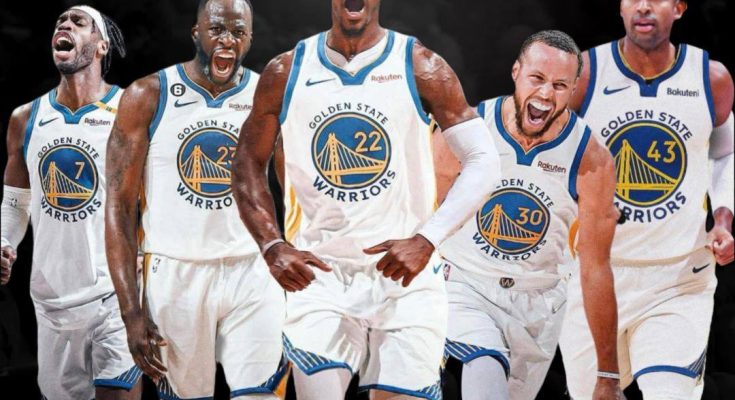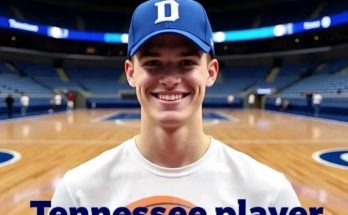The Golden State Warriors have long been one of the most fascinating franchises in the NBA, defined by their willingness to adapt, reload, and reimagine themselves whenever necessary to remain competitive in an ever-shifting league. That tradition seems to be continuing as reports suggest that the Warriors are operating under the assumption that Al Horford will be on their roster next season. For a franchise that has been wrestling with questions about age, roster balance, and championship viability, Horford’s presence could represent a stabilizing answer to many of their ongoing challenges. At 38 years old, the veteran big man is no longer the star centerpiece he was earlier in his career, but his skill set, experience, and basketball IQ still make him one of the most valuable role players in the league. The possibility of him joining Golden State is a storyline that touches not only on the future of the Warriors but also on the broader dynamics of team-building in today’s NBA.
For the Warriors, the last two seasons have been marked by tension between two competing timelines: the desire to maximize the remaining championship window with Stephen Curry, Draymond Green, and Klay Thompson, and the push to develop younger players like Jonathan Kuminga, Moses Moody, and Brandin Podziemski. That balancing act has not been smooth. Injuries, inconsistencies, and a lack of frontcourt stability have undermined Golden State’s efforts to return to the top of the Western Conference. Horford, who has proven to be one of the most reliable veterans in the league during his stints with the Boston Celtics and Philadelphia 76ers, could be the missing link in restoring a sense of balance to the roster.
Horford’s value lies not just in his production but in the way he plays the game. He is a big man who spaces the floor, defends multiple positions, and facilitates offense with intelligent passing. These qualities are tailor-made for a Warriors system that emphasizes ball movement, spacing, and defensive versatility. While he would not be expected to carry heavy minutes night after night, his ability to anchor lineups in key stretches could relieve enormous pressure from Green, who has shouldered the defensive and playmaking burden for years. The pairing of Green and Horford in the frontcourt would be one of the most intelligent, disciplined, and versatile defensive tandems in basketball, capable of switching, protecting the rim, and orchestrating rotations with the kind of precision that has long defined Golden State’s championship-level defenses.
The notion that the Warriors are operating like Horford will be part of the roster also suggests that the organization is preparing for a shift in identity. In recent years, Golden State has been criticized for leaning too heavily on small-ball lineups that often leave them vulnerable to bigger, more physical opponents. Horford, despite his age, remains one of the most effective bigs at combating size without sacrificing spacing or ball movement. His presence would give Steve Kerr the flexibility to go big without sacrificing the Warriors’ offensive principles. The days of relying on undersized centers or forcing Green to guard elite seven-footers for entire games may finally be behind them if Horford is indeed part of the equation.
From a cultural standpoint, Horford also fits seamlessly into the Warriors’ environment. He has built a reputation as one of the consummate professionals in the NBA, respected by teammates and coaches for his leadership, humility, and unselfishness. That profile mirrors the culture Golden State has worked to cultivate since Steve Kerr took over as head coach in 2014. With questions swirling about Klay Thompson’s future, the decline of Andrew Wiggins’ consistency, and the maturity of younger players, Horford’s presence could provide a stabilizing veteran influence both on and off the court. In many ways, he would serve a role similar to what Andre Iguodala brought in the past: someone who doesn’t need the spotlight but elevates the team with his intelligence, composure, and willingness to do the little things.
The timing of this potential addition is critical when considering where the Warriors stand in their trajectory. Stephen Curry, at 37, remains an elite player, but his window as the franchise’s centerpiece is narrowing. Golden State cannot afford to waste any season, and the addition of a player like Horford signals that the team is committed to maximizing every opportunity. Unlike chasing a blockbuster star or relying solely on unproven youth, Horford represents a pragmatic move that addresses immediate needs while complementing existing strengths. He may not deliver highlight reels or big scoring numbers, but his steady contributions could be the difference between a team fighting for a play-in spot and one pushing deeper into the postseason.
There is also a strategic chess element to this move. The Western Conference is loaded with dominant big men: Nikola Jokić in Denver, Anthony Davis in Los Angeles, Karl-Anthony Towns and Rudy Gobert in Minnesota, and Victor Wembanyama in San Antonio. The Warriors have often struggled to contain such players without exhausting Green or exposing their lack of size. Horford, who has consistently held his own against elite bigs throughout his career, provides a viable defensive counter. While he may not shut down players like Jokić, he offers the kind of versatility and experience that allows a team to adjust without being overwhelmed. That alone could have massive playoff implications, especially in a conference where matchups often decide series outcomes.
Financially, bringing Horford into the fold also aligns with the Warriors’ current realities. The franchise is operating under significant luxury tax pressure, and splashy signings or blockbuster trades may not be feasible without sacrificing core pieces. Horford, who is near the end of his career, would likely come at a manageable price point relative to his impact. This would allow the Warriors to address their needs without creating new financial headaches. For a front office that has been criticized for mismanaging resources in recent years—most notably the failed James Wiseman experiment—this type of acquisition would represent a smarter, more efficient use of limited flexibility.
The move also raises fascinating questions about how Kerr might deploy Horford. Would he start alongside Draymond Green in a twin-playmaking frontcourt, or would he come off the bench as a steadying force for second units? Either way, his minutes would likely be managed carefully, but his presence would give Kerr far more options in balancing lineups. Imagine a second unit where Horford and Chris Paul orchestrate the offense with young scorers like Kuminga and Podziemski benefiting from their leadership and passing. That kind of balance could eliminate the scoring droughts and chaotic stretches that plagued the Warriors last season when Curry sat.
While the excitement surrounding Horford’s potential arrival is valid, it is also worth acknowledging the risks. At his age, durability is a legitimate concern. The grind of an 82-game season takes a toll, and relying on Horford for extended stretches could be risky. However, if the Warriors manage his minutes wisely and focus on having him at full strength for the postseason, the benefits likely outweigh the risks. In many ways, Golden State does not need Horford to be a 30-minute-per-night player; they need him to be the steady presence who helps them win pivotal possessions, stabilize rotations, and neutralize mismatches when it matters most.
Another consideration is how this move might impact the development of younger players. The Warriors have emphasized the need to give Kuminga, Moody, and Trayce Jackson-Davis larger roles moving forward. Adding Horford could cut into some of those opportunities, particularly for Jackson-Davis, who is expected to grow into a bigger role as a center. However, one could also argue that learning directly from a veteran like Horford would accelerate Jackson-Davis’s development. Few young bigs get the chance to study footwork, positioning, and defensive instincts from a player as cerebral as Horford. In this sense, the acquisition could serve a dual purpose: short-term competitiveness and long-term player growth.
Ultimately, the report that the Warriors are operating like Horford will be part of the roster next season speaks to a franchise intent on making the most of its current era. They are not preparing to rebuild or fade quietly into mediocrity. Instead, they are doubling down on maximizing Stephen Curry’s remaining prime while adding the type of complementary pieces that can extend their relevance. Horford represents a move toward pragmatism, experience, and team-first basketball—values that align perfectly with what the Warriors have always stood for during their championship runs.
For Warriors fans, the idea of Horford joining the team is both exciting and reassuring. It suggests that the front office recognizes the shortcomings of the last two seasons and is addressing them with tangible solutions rather than empty promises. It also signals a recognition that while Curry remains the face of the franchise, he cannot do it alone. Building around him with intelligent, versatile veterans like Horford is the path to keeping the championship window open just a little longer.
In the end, whether Horford ultimately dons a Warriors jersey remains to be seen, but the fact that the team is planning as if he will is telling. It highlights their willingness to evolve, their respect for the value of experience, and their determination to remain a contender even as the dynasty years slip further into the past. For Golden State, the next chapter is about balance, stability, and making every possession count. And if Al Horford is indeed part of that story, the Warriors may have found exactly what they need to bridge the gap between their glorious past and an uncertain but hopeful future.



